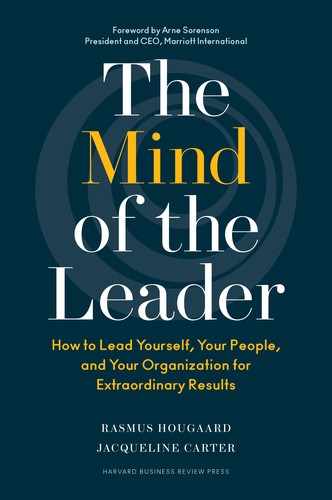PART THREE
Understand and Lead Your Organization

The mind creates our behavior. Our behavior shapes the people we lead. And the people we lead create the cultures of our organization and thereby determine its performance.
Finding purpose or happiness or engagement can be difficult when working in an organization that views employees as mere tools for profit. Organizations instead need to become people-centered. This requires creating an organizational culture that caters to intrinsic human drivers, like connectedness, meaning, and happiness. Caring for people as a core business strategy is an effective way of enhancing collective performance.
Most organizations talk about the importance of people, but few create cultures in which people are truly seen as the core of the company. Mindfulness, selflessness, and compassion are powerful building blocks for creating that kind of culture. With MSC leadership in place, people will be at the center of your organization, and their basic human needs to be connected, have meaning, be valued, and be happy will be met—all to the benefit of your organization and the wider community.
A cultural transformation toward a more people-centered organization has to start with leadership teams embodying the change. It’s about action, not words. This transformation includes modeling desired behaviors as well as revisiting and revising work practices, policies, and procedures in line with new ways of working.
In part 3, we’ll explore how mindful, selfless, and compassionate leadership behaviors are critical to creating and sustaining a truly people-centered organization. Like the previous parts, this part starts with a chapter on understanding your organization. Showing the impact that organizational culture has on organizational results, this chapter considers what we as leaders can do to develop cultures that enable engagement, enhance meaning, and increase connectedness and happiness. Chapter 11 follows with a look at how to create a more mindful culture and enhance organizational focus. Chapter 12 then examines how to instill a culture of selflessness and reduce unhelpful divisions and hierarchies. Finally, chapter 13 explores how to embed compassion in your culture, making people feel cared for, respected, and valued as part of the organizational tribe.
